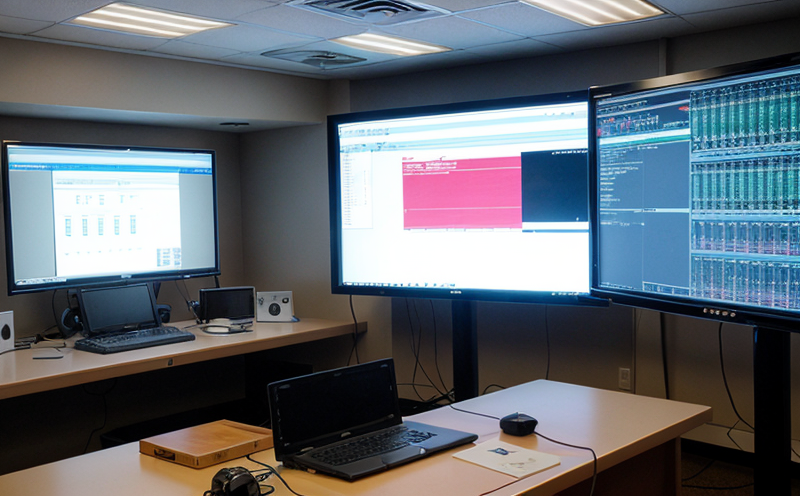UIC 776 Performance Testing of Track Circuit Systems
The UIC (Union Internationale des Chemins de Fer) 776 standard is a critical document that governs the performance testing of track circuit systems in railway signaling and control. This standard ensures that track circuits function reliably, accurately, and consistently under various operating conditions. Understanding the intricacies of this test is essential for quality managers, compliance officers, R&D engineers, and procurement professionals who are involved with railway infrastructure.
Track circuits play a pivotal role in rail transportation by detecting the presence or absence of a train within a specific section of track, thus enabling safe operation and signaling. The UIC 776 standard focuses on several key aspects including the continuity and insulation resistance of the track circuit, voltage levels, and signal integrity under both static and dynamic conditions. This ensures that any deficiencies are identified early in the lifecycle of the system.
The testing process is meticulous and involves a series of steps to simulate real-world scenarios. The first step is to prepare the test specimen by ensuring the track circuit is set up according to UIC 776 specifications. This includes configuring the power supply, insulation materials, and any other components required for the test. Once configured, the system undergoes rigorous testing using specialized instrumentation that can measure voltage levels, resistance, and current flow.
The test apparatus used in this procedure is designed to replicate the conditions under which track circuits operate in a live environment. This includes simulating different types of trains (lightweight, heavy freight), varying speeds, and different environmental conditions such as humidity and temperature fluctuations. The testing process also involves checking for signal interference from other parts of the railway system to ensure that the track circuit remains unaffected.
Upon completion of the tests, detailed reports are generated that document all findings. These reports provide a comprehensive overview of how well the track circuit performed under each test condition. They include numerical data as well as graphical representations where applicable. The results are then analyzed by our team of experts to determine compliance with UIC 776 standards.
For quality managers and compliance officers, understanding these tests is crucial for ensuring that all components of the railway system meet regulatory requirements. For R&D engineers, this knowledge helps in refining designs and improving performance. Procurement professionals benefit from knowing how well suppliers adhere to industry best practices during manufacturing processes.
The UIC 776 standard ensures high levels of safety and reliability within railway systems by mandating stringent testing protocols. By adhering strictly to these standards, we contribute significantly towards preventing accidents due to malfunctions in track circuits. This not only enhances public safety but also supports efficient operations leading to reduced downtime and increased productivity.
In summary, the UIC 776 performance test of track circuit systems is a vital component of ensuring robust railway signaling and control systems. It helps maintain consistency across different parts of the network while promoting adherence to international standards. Through comprehensive testing procedures, we ensure that every aspect of the system functions flawlessly under all expected operational conditions.
Why It Matters
The importance of UIC 776 performance testing cannot be overstated as it directly impacts the safety and efficiency of railway operations. Compliance with this standard is mandatory for any organization involved in designing, manufacturing, or maintaining track circuit systems. Failure to meet these standards could lead to operational disruptions, increased maintenance costs, and most importantly, risk to human life.
From a broader perspective, adherence to UIC 776 contributes positively towards the sustainability goals of railway transportation. By ensuring that all components are reliable and perform optimally, less frequent repairs are needed which reduces waste and promotes sustainable practices. Additionally, it fosters innovation by encouraging continuous improvement in technology and design.
For end users such as passengers traveling on trains, UIC 776 ensures smoother journeys with fewer delays caused by technical issues. It also enhances confidence among stakeholders knowing that stringent quality controls are being applied throughout the supply chain.
Moreover, meeting these standards provides an advantage in competitive markets where reliability and safety form key criteria for selecting suppliers. This aligns perfectly with today’s trend towards more sustainable modes of transportation which emphasize not just speed but also dependability.
Customer Impact and Satisfaction
The implementation of UIC 776 performance testing has direct positive impacts on customers by enhancing their overall experience. For passengers, this means smoother rides with fewer disruptions due to technical failures. It translates into increased satisfaction knowing that rigorous quality assurance measures are in place before deployment.
For businesses operating within the rail sector, meeting these standards improves reputation and builds trust among clients and partners. Satisfied customers are more likely to recommend services or products leading to growth opportunities. Furthermore, it helps companies stay ahead of competitors by ensuring they maintain high standards of service delivery.
The impact extends beyond immediate stakeholders; improved performance contributes positively towards environmental sustainability goals set forth by various organizations globally. Efficient use of resources through reliable systems reduces energy consumption and emissions associated with transportation activities.
International Acceptance and Recognition
The UIC 776 standard enjoys widespread recognition across the globe, particularly in countries that prioritize robust railway infrastructure. Its acceptance is driven by its comprehensive approach to ensuring track circuit reliability which aligns closely with international best practices.
Many leading rail companies around the world have adopted this standard as part of their quality assurance programs. This not only demonstrates their commitment to safety but also reflects well on their brands. Compliance with UIC 776 is seen as a benchmark for excellence in railway technology and operations.
The standard’s international recognition further strengthens its credibility, making it easier for organizations worldwide to implement consistent testing procedures regardless of location or language barriers. This global acceptance facilitates seamless collaboration between different entities involved in rail transport projects globally.





